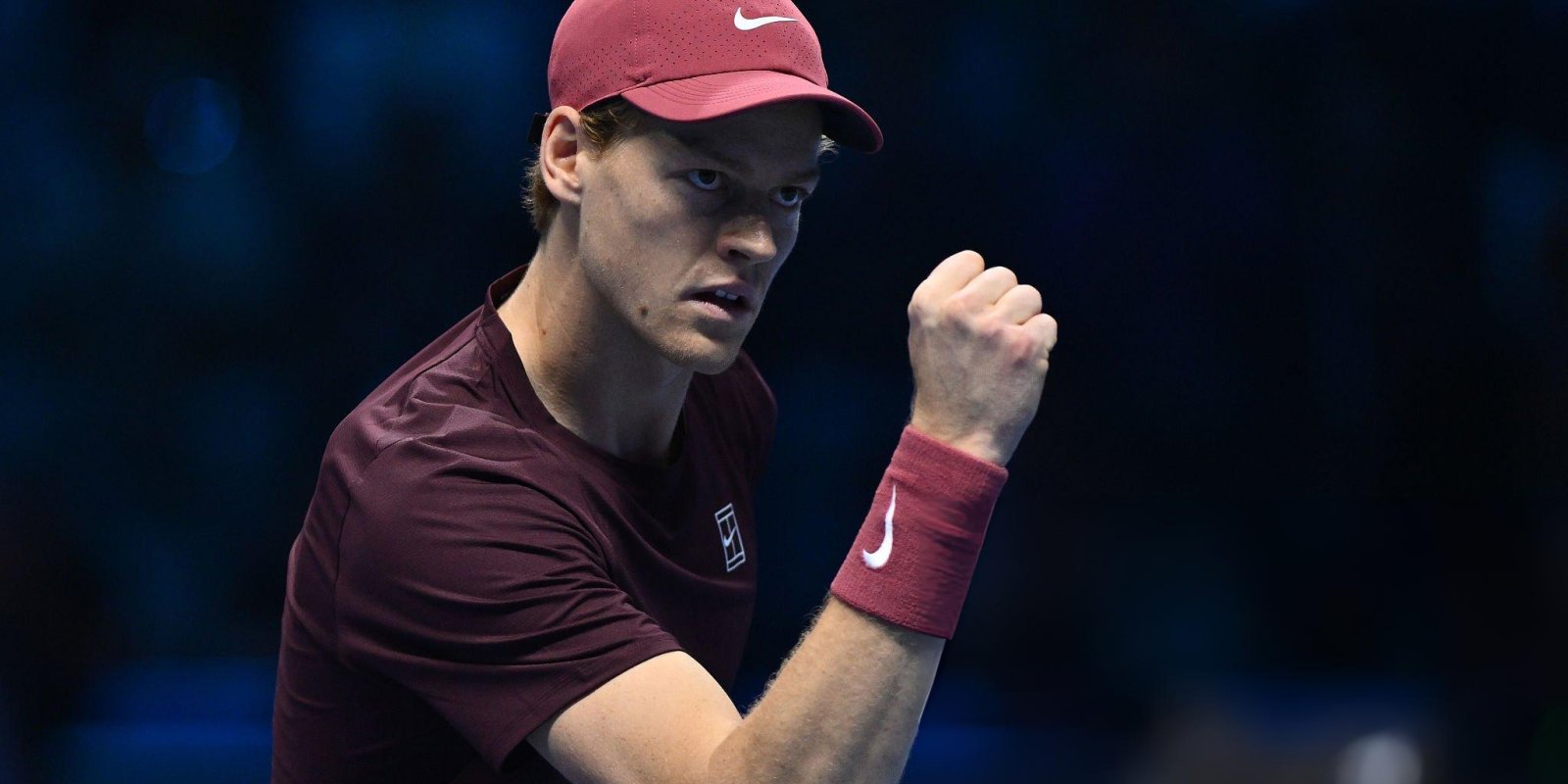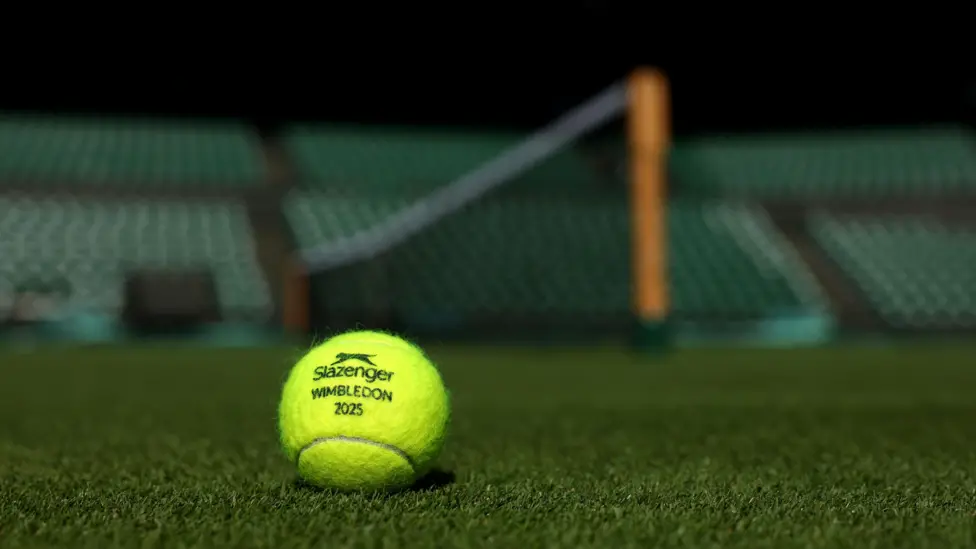
It is easier to describe the 2025 tennis season not with words, but with numbers. A three-month suspension, 5 hours 29 minutes in the Roland Garros final, 15 million dollars in prize money in a single year, Iga Swiatek's bagels, Valentin Vacherot's Shanghai miracle and Carlos Alcaraz's buzz cut that became a meme. Against the backdrop of the Sinner–Alcaraz duopoly, some players kept losing finals, others changed their sporting nationality, while some earned more in an hour of exhibition tennis than in an entire tournament. Let's break this year down by the numbers.
Russian Tennis: From Medvedev's Slump to Bublik's Prime
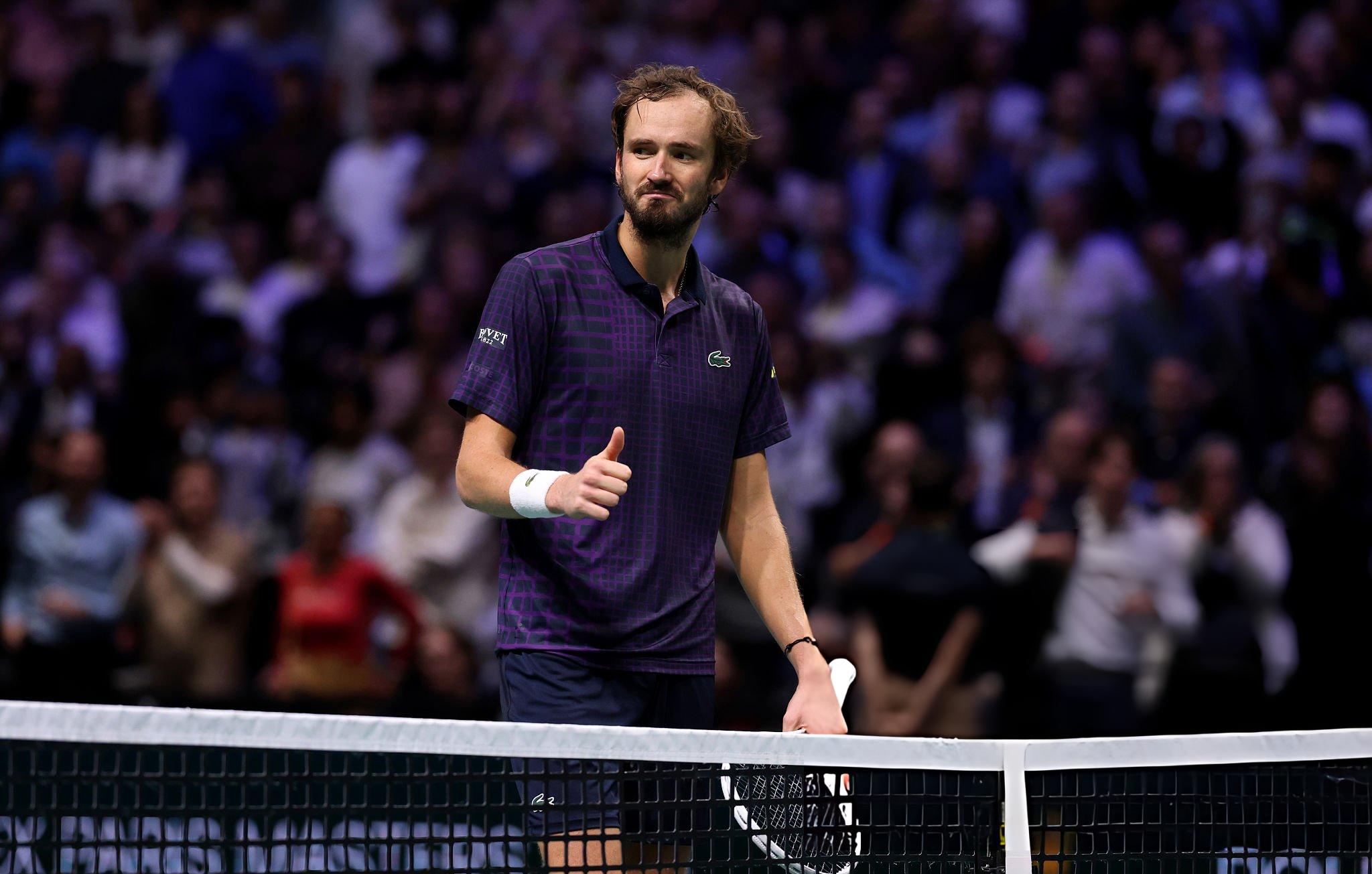
For Daniil Medvedev, the 2025 season at the Grand Slam tournaments was almost a disaster. At all four Grand Slams he won just a single match — at the Australian Open. There, the Russian pulled off a five-set thriller against Thai player Kasidit Samrej, who was only in the fifth hundred of the rankings before the tournament. At the other majors, Daniil crashed out early and painfully.
In Melbourne, Medvedev's name was discussed more in the financial columns than in the sports section: for his conduct in two Australian Open matches he paid a total of 76 thousand dollars in fines — the largest penalty of his career. Later at the US Open, the story repeated itself: a first-round loss to Benjamin Bonzi brought another 42.5 thousand dollar fine, his second-largest ever. In the third set of that match he and the New York crowd staged an almost six-minute pause-performance — questionable from an etiquette standpoint, but one of the most memorable show moments of the season.
Medvedev's sporting slump lasted 882 days — that is how long he went without a title until he finally triumphed at the tournament in Almaty. That trophy immediately extended his unique streak: Daniil now has 21 titles in 21 different cities — he has yet to win any tournament twice. Even so, the year-end picture for Russian men's tennis was gloomy: for the first time in seven years, the ATP Finals took place without Russian players, and in Turin many openly said they really missed Medvedev.
Against this background, Alexander Bublik, who grew up in the Russian system but now represents Kazakhstan, stood out brightly. He essentially produced the prime season of his career: he finished the year at No. 11 in the rankings and won four titles — half of all the trophies he has ever claimed. In 2025 it was Bublik who ended up highest among players with Russian roots, and his decision to change racquets turned into one of the most successful technical gambles of the year.
The story of Diana Shnaider was equally telling. In a single season she managed to change three coaches — things did not click for long with Dinara Safina, Marius Copil or Carlos Martinez. The fourth coach, Sascha Bajin, joined in August and has held on so far, but the mere fact of such a coaching marathon says a lot about the turbulence surrounding the young Russian.
The picture is completed by worrying statistics on flag changes: in 2025 three Russian women players chose to compete for other countries. Daria Kasatkina now represents Australia, while Maria Timofeeva and Alexandra Barmicheva play for Uzbekistan. For Russian tennis this is no longer an isolated case, but a disturbing trend.
Mirra's Day and Rublev's Night: A New Russian Rise

At the same time, Russia also produced one of the main protagonists of the WTA season. At 17, Mirra Andreeva won the WTA 1000 event in Dubai and became the youngest ever Russian No. 1. At the same time she rewrote the history of the series itself: since the introduction of the thousand-level events in 2009, no one had ever won a title there at such a young age — Andreeva became the youngest WTA 1000 champion.
This triumph formed part of a unique day for Russian tennis: just 24 minutes after Mirra's victory in Dubai, Andrey Rublev claimed the ATP 500 title in Doha. In one evening, Russian players took home two major trophies in two different tours — a rare moment of collective resurgence.
A year later Andreeva took the next step: at 18 she broke into the WTA top 5 and became the youngest player in the top five since Maria Sharapova, who got there at 17. The Andreeva–Sharapova link surfaced again, but in a different context: in 2025 Maria was inducted into the International Tennis Hall of Fame, becoming the first Russian woman and the third Russian player overall to receive this honour. Still, the ceremony was remembered not only for Maria: Serena Williams' unexpected appearance on stage to present Sharapova virtually stole the show, and many spent days discussing this duo of former rivals.
Sinner and Alcaraz: The Duo That Rewrote the Grand Slams
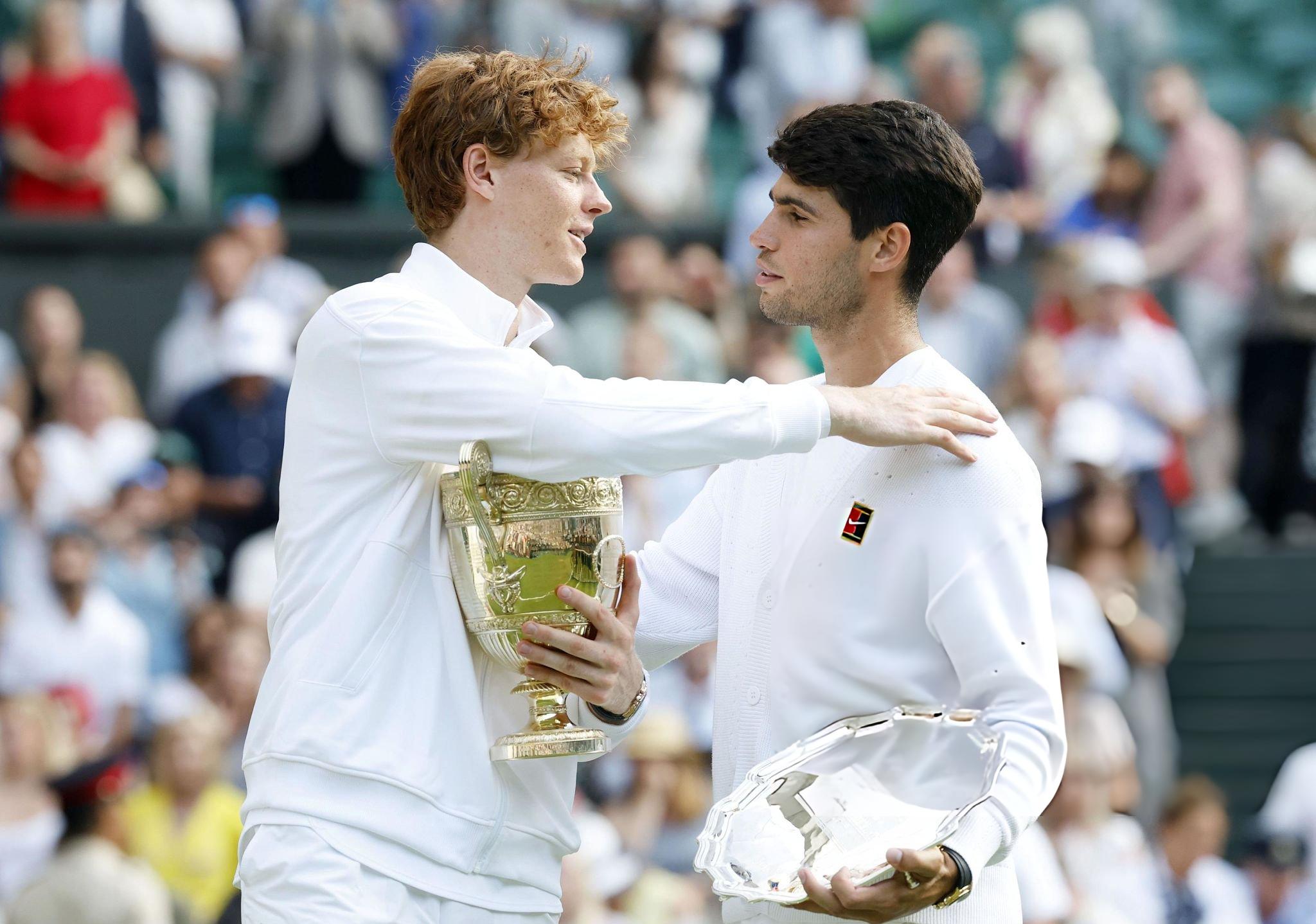
In 2025 the men's tour definitively fell under the control of the Jannik Sinner–Carlos Alcaraz tandem; fans jokingly refer to them as "Sinkaras". Ironically, the Italian's march to dominance began with a pause: a three-month suspension for last year's positive clostebol test fit almost perfectly into the window between the Australian Open and Roland Garros, barely affecting the season's key events.
Once back on court, Sinner and Alcaraz produced one of the greatest clay-court finals ever seen. The Roland Garros title match between them lasted 5 hours 29 minutes, becoming the longest final in the history of clay-court Grand Slams. It was not just a marathon, but a symbol of how far the level of the new leaders has risen.
By the end of the season Sinner and Alcaraz had again shared two Grand Slam titles apiece for the second year running. They even swapped majors compared to 2024: the one who had won Wimbledon the previous year now triumphed at the US Open, and vice versa. Another historic first: for the first time ever, world No. 1 and No. 2 contested all four Grand Slam finals, and at the start of the year Alexander Zverev was ranked No. 2.
By the end of the season Carlos Alcaraz had become the youngest six-time Grand Slam champion in history: when he lifted his sixth major, he was just 22 years, 4 months and 2 days old. If he maintains this pace, the Spaniard could theoretically catch Novak Djokovic's record for Slam titles by the time he is 31.
Sinner, meanwhile, dominated far beyond the Slams. In 2025 he played in all four Grand Slam finals and in the title match at the ATP Finals — before him, this "full set" had been achieved only by Roger Federer and Novak Djokovic, and both were older than the Italian when they did it. At the ATP Finals Sinner effectively rewrote history: over the last two editions he did not drop a single set, matching a feat previously achieved only by Ivan Lendl back in the 1980s.
Even outside the official tour Sinner was putting up record-level numbers. At the exhibition event "Six Kings Slam" he earned 6 million dollars in prize money for the second straight year, then quipped in his usual style: "I don't play for the money." After his semi-final there, his head-to-head record against Alex de Minaur stood at 13–0 — yet the Australian still joked: "I've played him many times and I know how to beat him."
In the rankings Sinner reached a cosmic level: as world No. 2 he led third-placed Alexander Zverev by 6340 points. To grasp the scale, note that this gap is greater than the difference between Zverev and the very last, 2189th position in the ATP rankings.
Grass, Bagels and Nerve-Racking Serves: The Women's Tour Under the Lens of Numbers

In women's tennis the main storyline once again revolved around Iga Swiatek. In 2025 she finally conquered her least favourite surface — grass. At Wimbledon the Pole captured the first grass-court Grand Slam title of her career, definitively putting to rest the notion that lawn tennis simply did not suit her game. Whether the organisers really did slow the courts down significantly, or Iga fine-tuned every detail of her game to this surface, is up for debate — but the outcome is clear.
The final in London was a statement all by itself: Swiatek crushed Amanda Anisimova 6–0, 6–0. A bagel like that might crush anyone psychologically, but the American responded very differently. Over the course of the season she beat Iga twice, reached the US Open final, qualified for the WTA Finals and finished the year ranked No. 4 in the world.
At WTA 1000 events Swiatek continued to terrorise her opponents: over the course of her career she has already racked up 34 sets won to love at this level — a record for the thousand-level tournaments. Her figurative "bagel bakery" seems to operate seven days a week.
The surprises did not come from her alone. At the Australian Open analysts gave Madison Keys only a 1.4% chance of winning a particular match — and yet the American prevailed. It was one of the most unlikely wins, in percentage terms, at Grand Slam level in women's tennis over the last 30-plus years.
Financially, Aryna Sabalenka raised the bar for the women's tour. In the 2025 season she earned 15 million dollars in prize money — a record one-year total in women's tennis. At the other end of the money story stood Elena Rybakina: by winning the WTA Finals without losing a match, she took home 5.235 million dollars, the largest prize purse ever collected at a single official tennis tournament. Rybakina also became the tenth new champion of the WTA Finals in the last ten years — the event almost guarantees a new name on the trophy each season, and that tradition is still going strong.
The season's anti-record belongs to Coco Gauff. Over the year she hit 414 double faults — 16 fewer than in the previous season, but still enough to top this far-from-pleasant statistic for the second year in a row.
Novak Djokovic: Playing Against Time and the Calendar
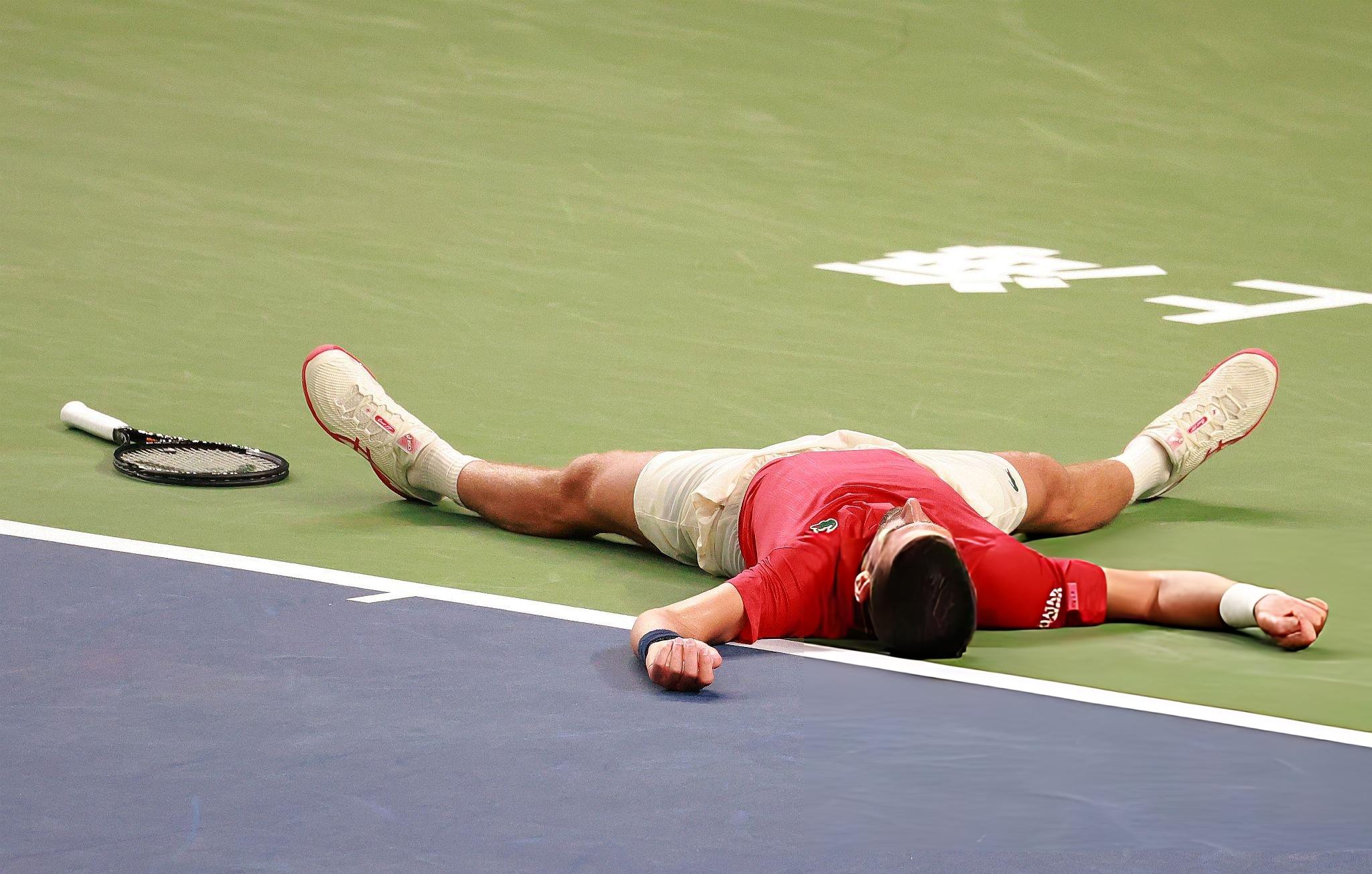
Even in the shadow of younger predators, Novak Djokovic continues to expand his personal record book. In 2025 he played 452 matches at Grand Slam tournaments — more than anyone in history. The previous record belonged to Roger Federer (429 matches), and the Serb has now overtaken his long-time rival in this category as well.
Physically, the season was far from easy for Novak. At the Shanghai Masters, played in extreme conditions, Djokovic felt sick on court three times, and he was far from the only one complaining about the heat and humidity. Daniil Medvedev, however, managed to spin it in a positive way for himself: as he put it, "I've suffered at many tournaments, but here everyone is suffering. And I'm happy about that."
At the end of the year Djokovic updated several age-related records at once. At 38 years and 5 months he won the ATP tournament in Athens, becoming the oldest champion in tour history. There he also claimed the 101st title of his career, having sealed his 100th a little earlier in Geneva. The Athens trophy is special in another sense too — it belongs to Novak's family and this season moved from Belgrade to the Greek capital. To play in Athens, Djokovic skipped the ATP Finals in Turin, once again showing that he sets his own priorities. His plans are quite clear: he intends to play at least until 2028 and to end his career at the Olympic Games in Los Angeles.
Experiments, Showmanship and the Shanghai Miracle

The 2025 season was also memorable for some unconventional formats. At the US Open the organisers staged, for the first time, an officially sanctioned exhibition event in mixed doubles: they simplified the rules, invited top singles stars and put up 1 million dollars in prize money. In the end, it was the only true doubles specialists in the draw — Sara Errani and Andrea Vavassori — who took advantage, walking away with both the title and the cheque.
Service-speed records were rewritten at Wimbledon. Frenchman Giovanni Mpetshi Perricard cranked his serve up to 246 km/h, setting a new benchmark for ball-in-play speed at this major. On the opposite end of the statistical spectrum, in the land of anti-records, Alejandro Davidovich Fokina found himself stuck: in 2025 he lost three more finals and now has a 0–5 record in ATP title matches.
Another name deserving its own line in the season chronicles is Valentin Vacherot. Before the start of the Shanghai Masters he was ranked only No. 204 in the world, yet he somehow won the tournament. In doing so he became the lowest-ranked Masters champion in history and the first player from Monaco ever to win an ATP event.
Carlos Alcaraz also stayed firmly in the spotlight. On the eve of the US Open he entrusted his hair to his brother and wound up turning up at the tournament with a completely shaved head. The new hairstyle instantly went viral on social media — from memes to jokes about improved aerodynamics. Ultimately, it was with this look that Carlos captured another major, and his buzz cut became one of the visual symbols of the season.
The calendar keeps expanding. It has already been decided that from 2028 onwards the tenth Masters 1000 tournament will move to Saudi Arabia. Against the backdrop of ongoing debates about an overloaded schedule, players are increasingly forced to choose where to play for ranking points and where to play for money. At that same "Six Kings Slam", Stefanos Tsitsipas and Alexander Zverev each received 1.5 million dollars for an hour-long exhibition match — many are willing to endure extra flights for cheques like that.
Tsitsipas overall has turned into the leading "philosopher" of the tour — at least online. Over the season he posted more than 150 times on Twitter/X, and many noted that the Greek star looked significantly more successful in the role of thinker than in that of title contender.
A Season That Will Stay in the Tables and News Feeds for a Long Time

Put all the numbers from 2025 together and you get a vivid yet deeply contradictory portrait of tennis. It includes Sabalenka's and Sinner's record-breaking millions, the dramatic 5 hours 29 minutes of the Roland Garros final, 246-kilometre-an-hour serves and Alcaraz's buzz cut turned into a meme. In the same picture we see Medvedev's crisis and flashes of brilliance, Mirra Andreeva's coming of age, Swiatek's bagels, Djokovic's historic feats and Valentin Vacherot's Shanghai miracle.
The 2025 season showed that modern tennis has long since moved beyond simple scores like 6–4, 7–5. Its story is now written in fines and prize money, in kilometres per hour and probability percentages, in thousands of ranking points and dozens of social-media posts. And it seems that in the coming years, when we ask, "Do you remember the 2025 tennis season?", the first thing that will come to mind will once again be the numbers.

